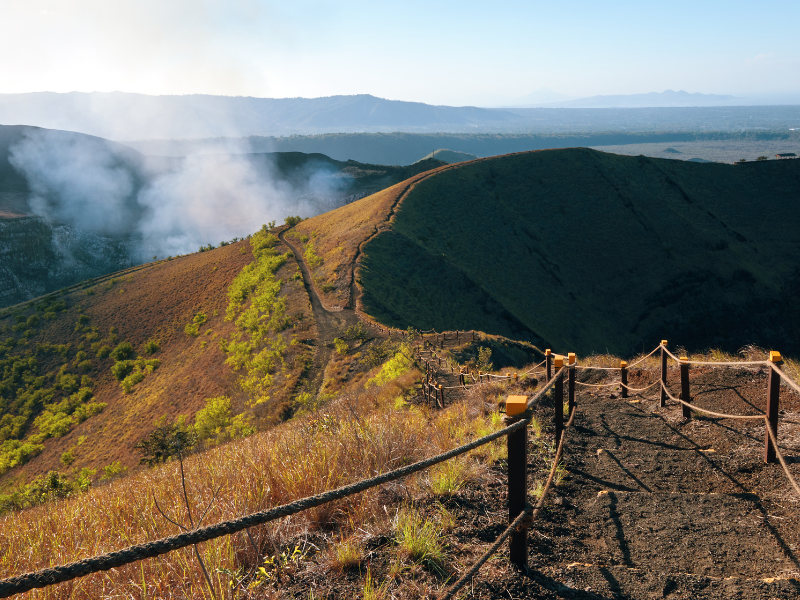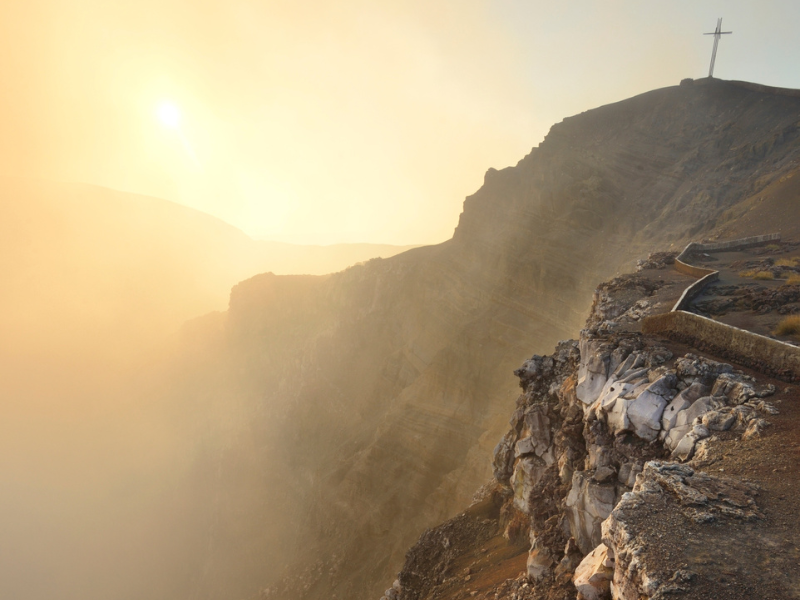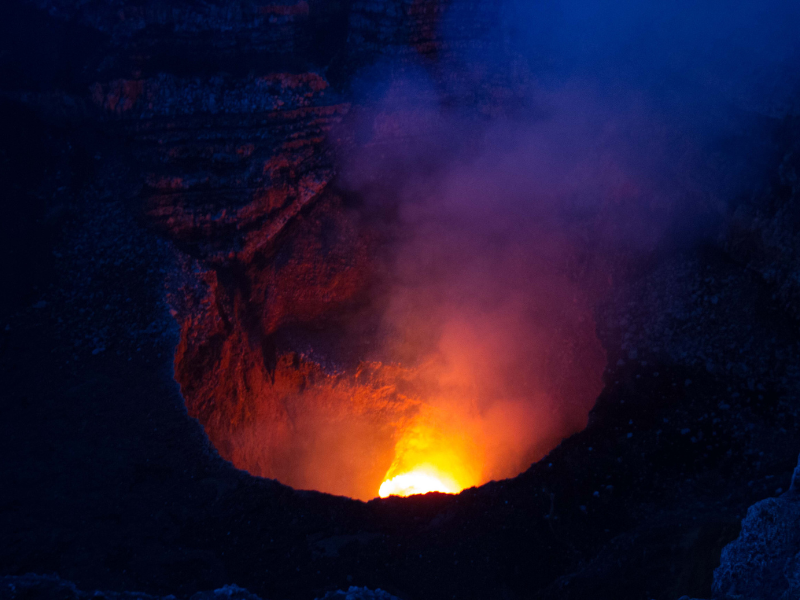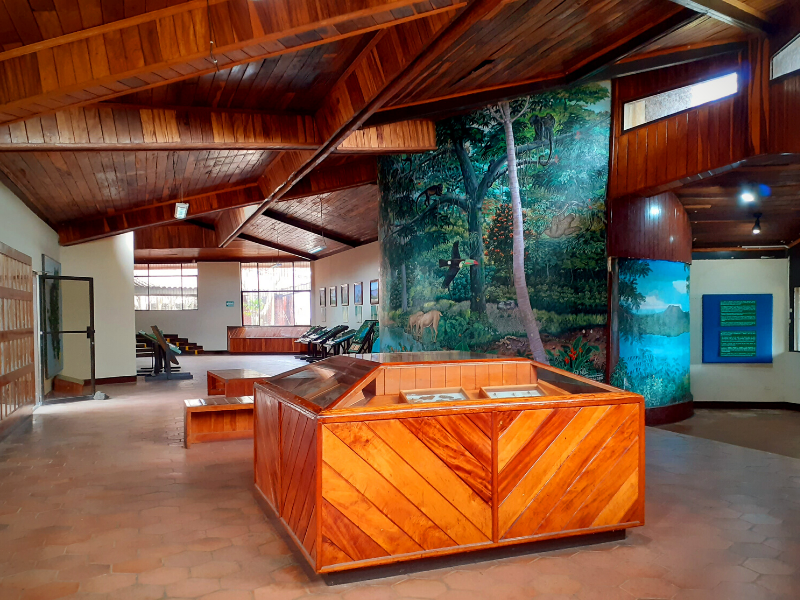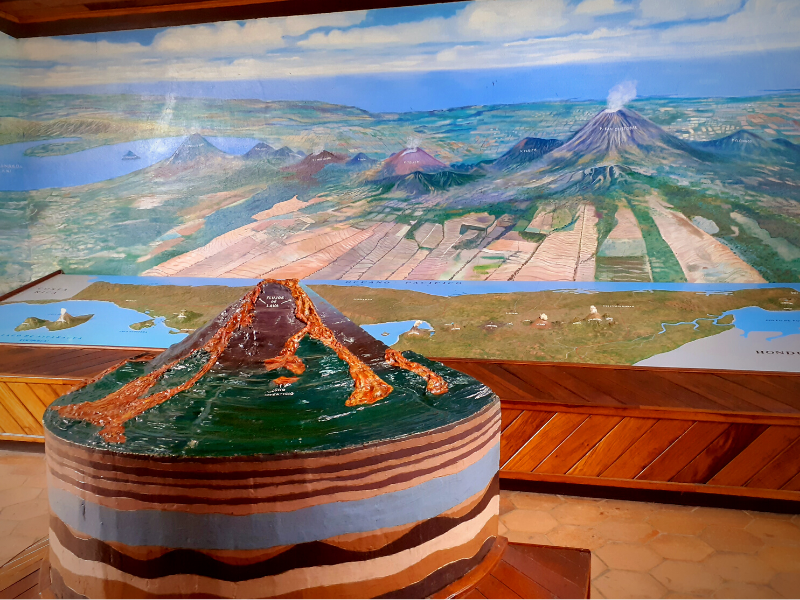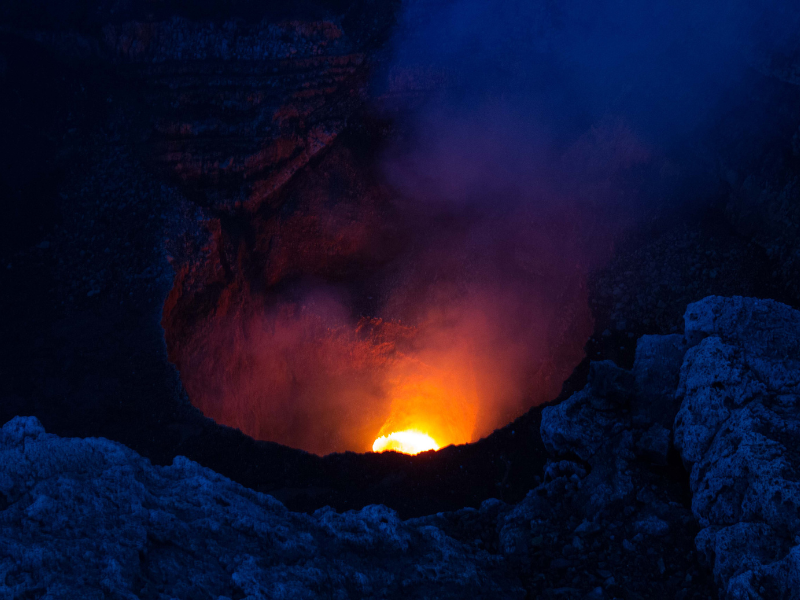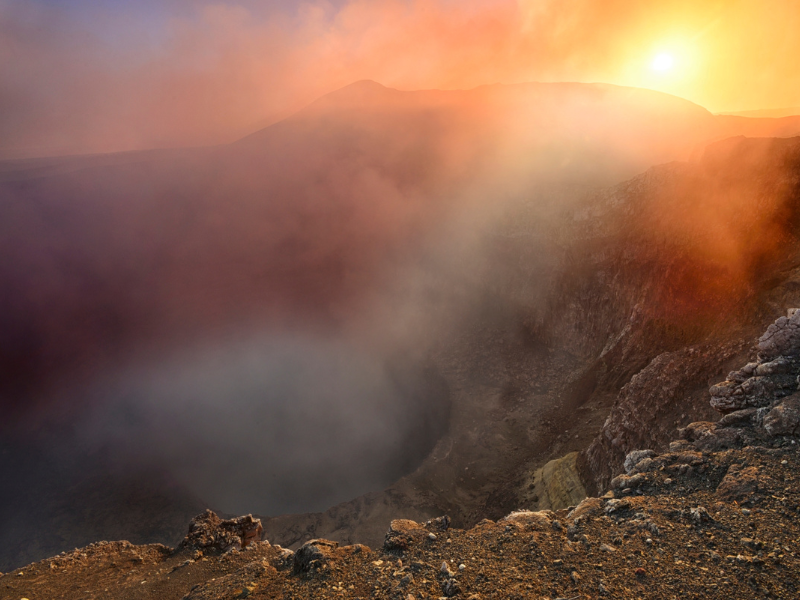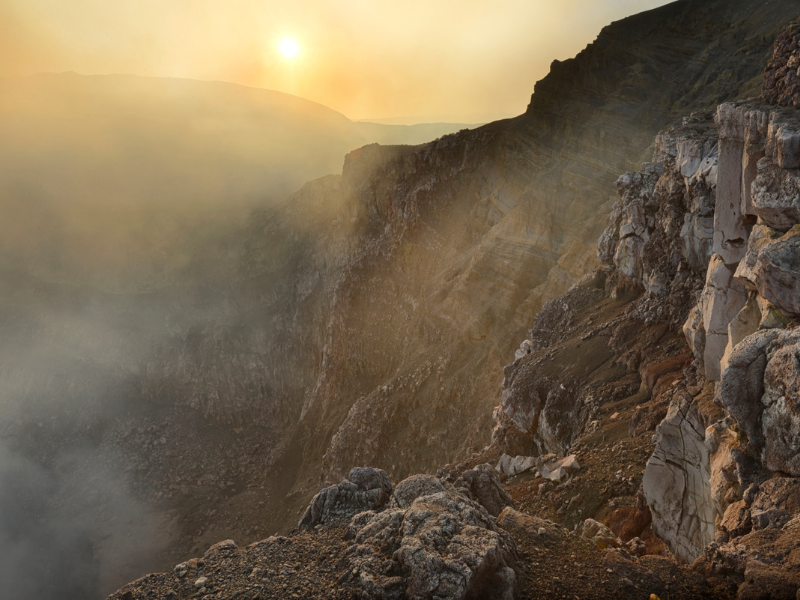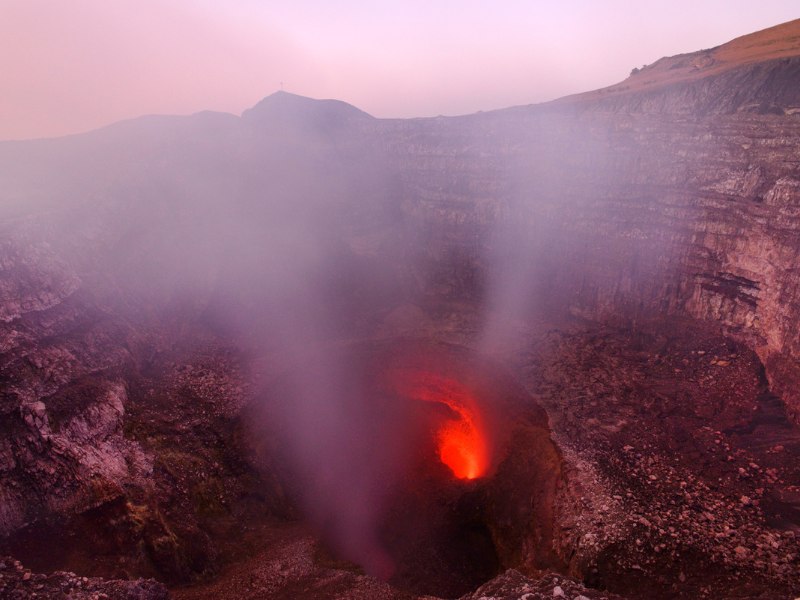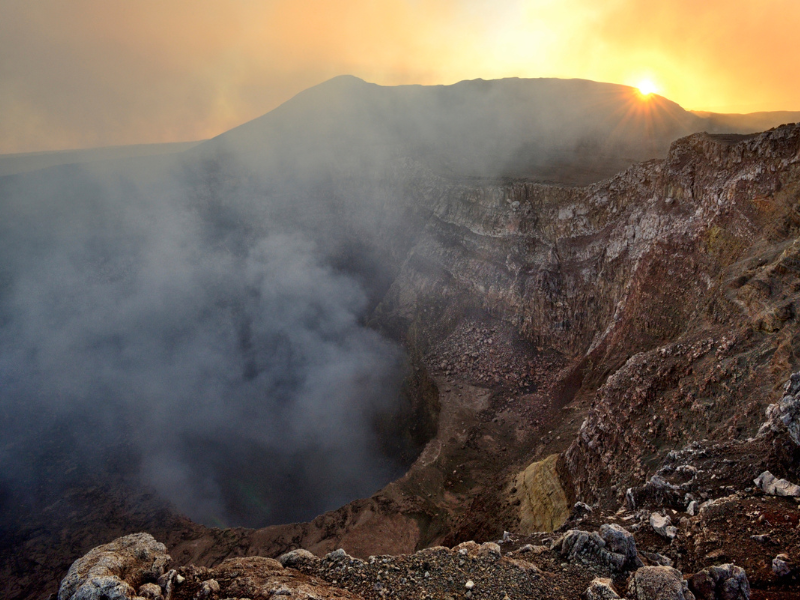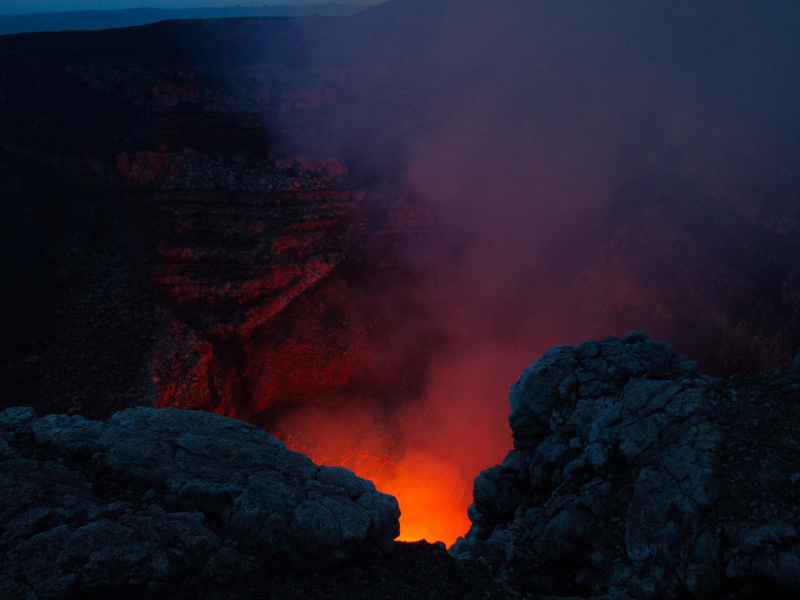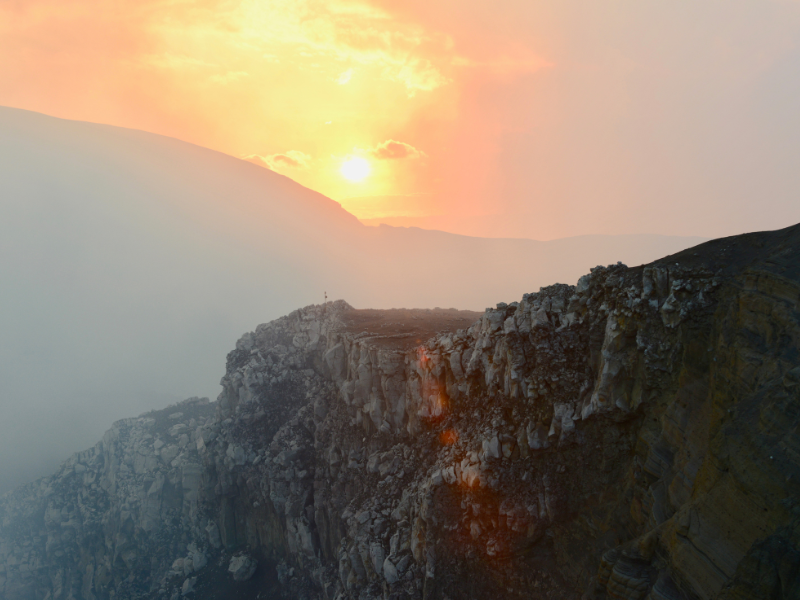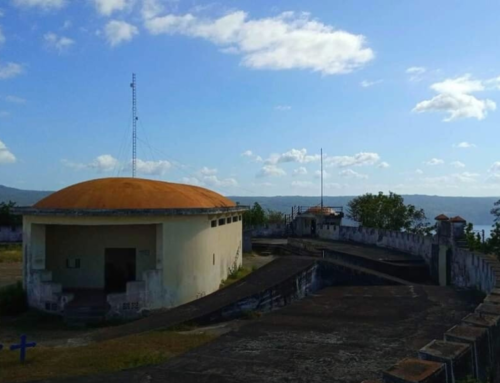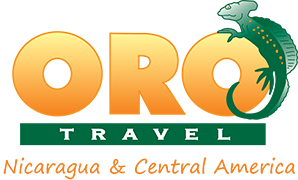MASAYA VOLCANO NATIONAL PARK
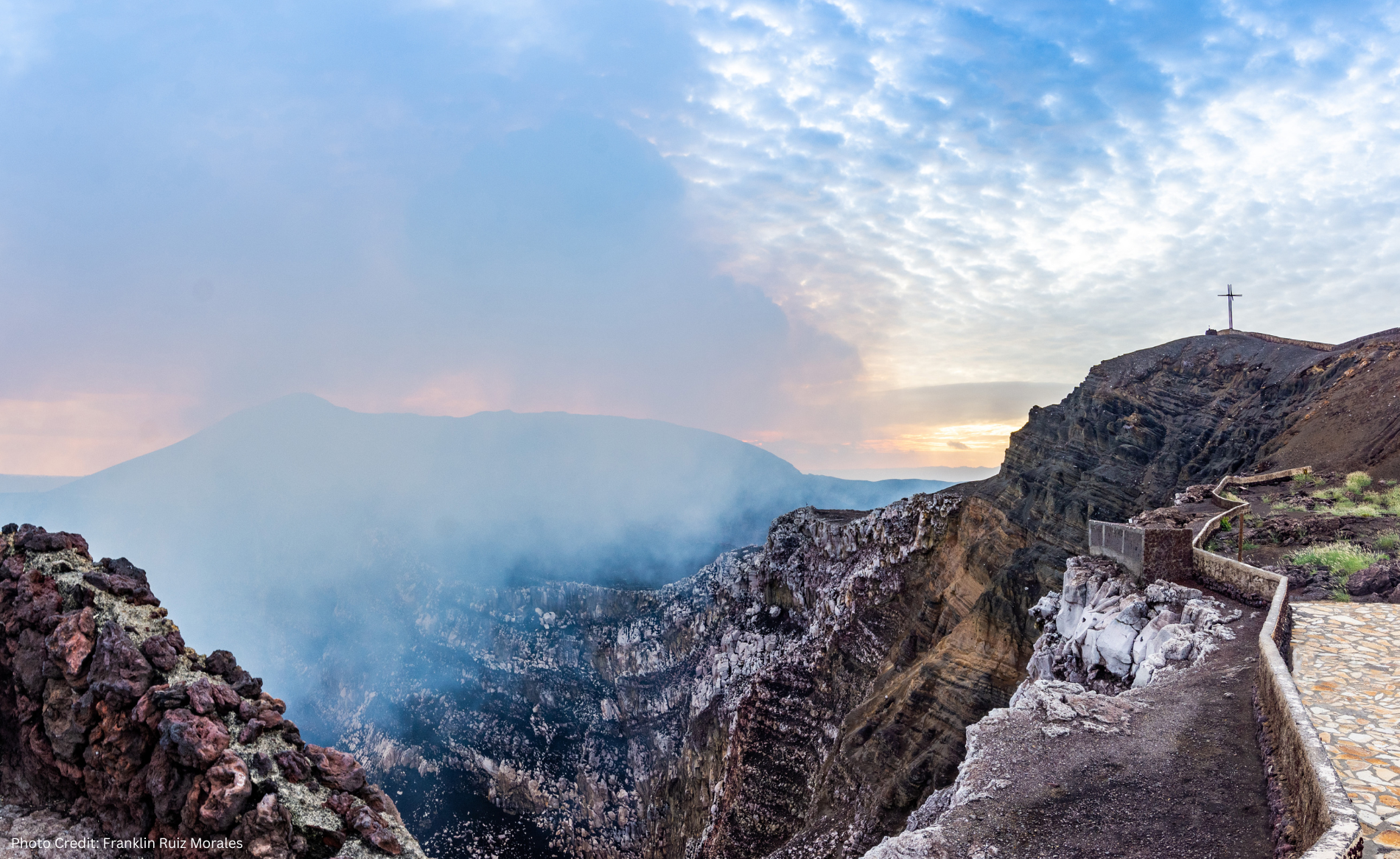
The Masaya Volcano National Park offers visitors the rare and unique opportunity to see an active volcano up close. The Santiago Crater is the only volcano in the western hemisphere where you are able to drive right up to the edge and observe the incredible spectacle of burning boiling lava!
The perfect selfie moment!
The volcano has erupted several times in history, and was feared by both the indigenous people and Spanish conquerors. The Spanish baptized the volcano “La Boca del Infierno” or “The mouth of hell”. They planted a cross “La Cruz de Bobadilla” (named after Father Francisco Bobadilla), on the crater lip in the 16th century in order to exorcise the devil. Another, less religious priest, Blas del Castillo, descended into the crater to explore for potential gold based on his idea that the bright orange-yellow molten magma was molted gold.
The National Park has a well-designed visitor center with informative panels of the geology of the country as well as the different ecosystems.
Unique features of Masaya Volcano National Park:
Activities:
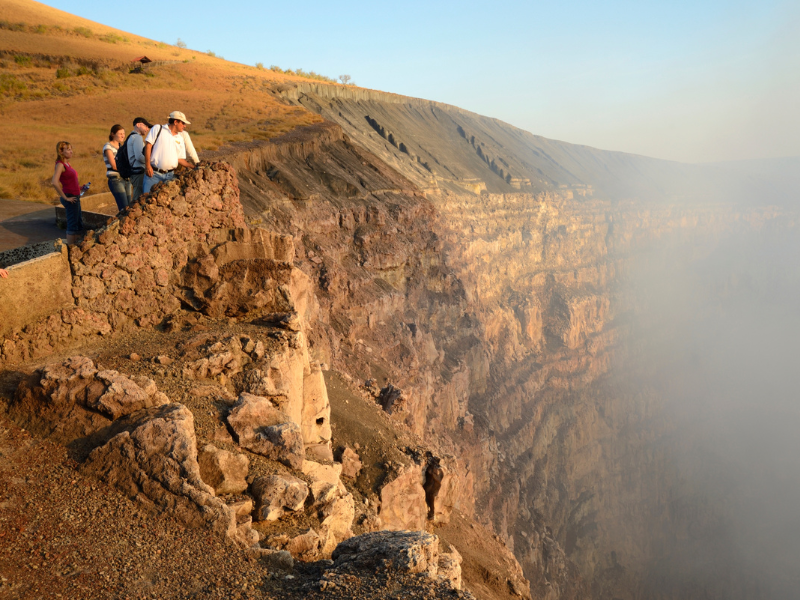
Contact Us
Send us a message and we will take the time to get to know you so we can help you find your amazing adventure.

